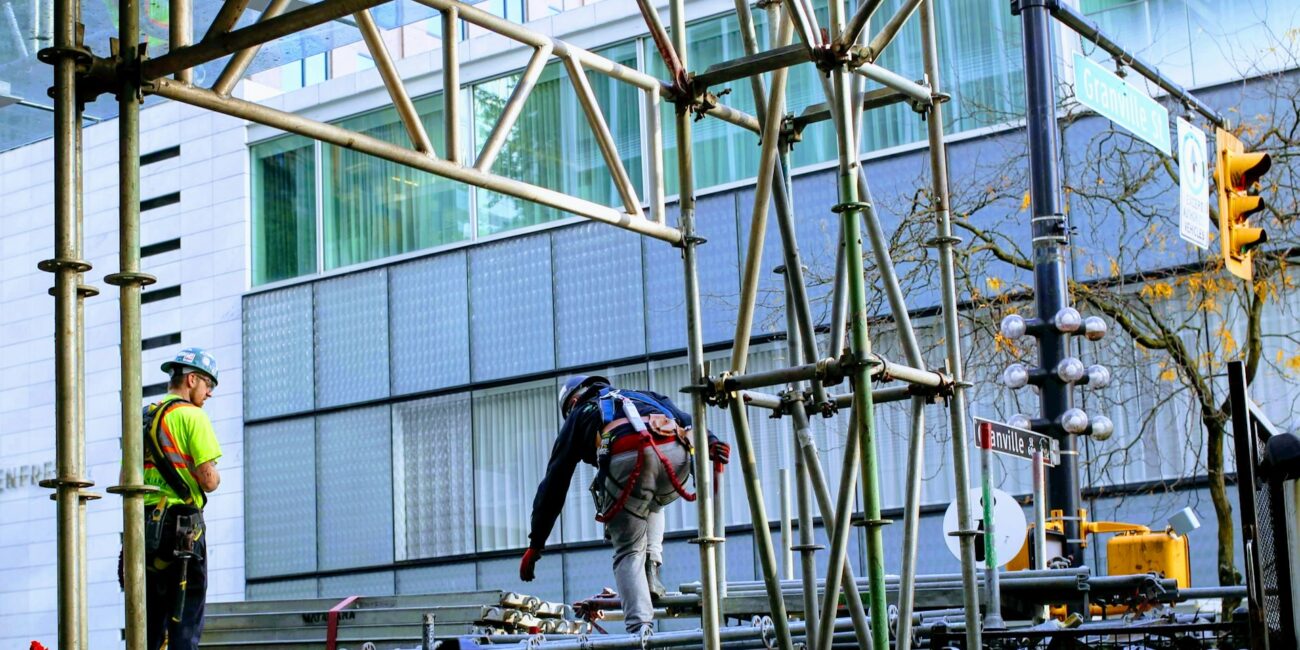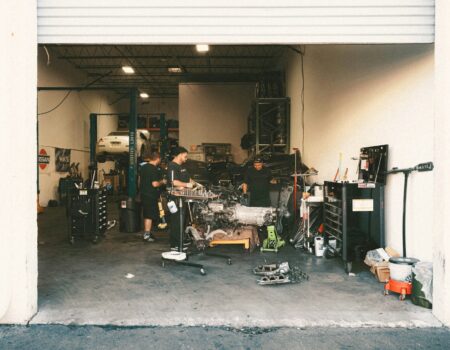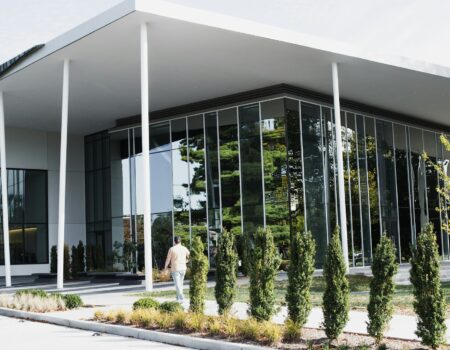Concrete cutting and coring are vital operations in construction and renovation. While they may seem straightforward, these processes come with inherent risks that cannot be underestimated.
Understanding and implementing the right safety measures is essential, not just for compliance, but for the well-being of all involved. Whether you’re a seasoned professional or new to the industry, safety should always be a priority.
This blog post provides comprehensive insights into effective safety measures for concrete cutting and coring services, and it aims to help you manage risks, use protective gear correctly, and ensure thorough training for all personnel.
Understanding the Basics of Concrete Cutting and Coring
What is Concrete Cutting?
Concrete cutting involves the removal or alteration of concrete structures. It’s a precise process that requires specialized tools and techniques.
Whether you’re cutting a small slab or a large wall, it’s crucial to understand the properties of concrete and how they change over time and under various conditions.
Accurate assessment before cutting can prevent structural damage and ensure the safety of operators and the surrounding area.
The Process of Concrete Coring
Concrete coring refers to the process of removing a cylinder of concrete from a larger structure. It’s often used to create openings for utilities such as plumbing and electrical wiring. Like cutting, coring requires careful planning and execution.
The right equipment, such as diamond drill bits, is essential for achieving clean cores without causing damage to the surrounding material.
Why Safety is Paramount
The need for safety in concrete cutting and coring can’t be overstated. These services present hazards like dust inhalation, noise pollution, and physical injury. Mitigating these risks should be a central focus for any team involved in these operations.
By ensuring appropriate training and equipment, you pave the way for safe and efficient project completion, safeguarding not only workers but also the integrity of the project itself.
Protective Gear: Your First Line of Defense
Importance of Wearing Protective Gear
Personal protective equipment (PPE) is essential in concrete cutting and coring. Proper gear includes hard hats, safety glasses, ear protection, gloves, and steel-toe boots.
Wearing these items protects workers from flying debris, loud noises, and other hazards associated with these tasks. Ensure that all team members have access to high-quality PPE and understand how to use it effectively.
Essential Protective Gear Checklist
- Head and Eye Protection: Use hard hats and safety goggles to protect against falling objects and debris.
- Hearing Protection: Earplugs or earmuffs are critical in reducing noise-induced hearing loss in high-decibel environments.
- Respiratory Safety: Respirators guard against dust inhalation, which is a common and serious hazard in concrete work.
- Hand and Foot Safety: Durable gloves and steel-toe boots prevent hand injuries and foot crush injuries.
Ensuring Correct Usage
It’s not enough to provide protective gear; correct usage is key to its effectiveness. Conduct regular training sessions and safety briefings to ensure everyone knows how to wear and care for their gear.
Regular checks and replacements of PPE guarantee that the gear remains functional and up to standard.
Comprehensive Training for Safety and Efficiency
The Role of Training in Safety
Training is a critical component of workplace safety. It provides workers with the knowledge they need to perform their tasks safely and efficiently. Comprehensive training covers equipment operation, emergency procedures, and hazard recognition.
By investing in training, you’re investing in your team’s safety and the overall success of your projects.
Designing Effective Training Programs
- Customized Modules: Tailor training programs to address specific needs and equipment used.
- Regular Refresher Courses: Conduct periodic refresher courses to ensure knowledge retention and keep up with industry standards.
- Hands-on Practice: Incorporate practical elements that allow workers to experience real-life scenarios in a controlled environment.
Monitoring and Evaluation
Post-training assessments help gauge the effectiveness of the programs. Use feedback from these assessments to continually improve the training. An ongoing evaluation process helps ensure that safety standards are consistently met across all operations.
Risk Management in Concrete Cutting and Coring
Identifying Potential Hazards
Identifying hazards is the first step in effective risk management. Common hazards include equipment malfunction, structural instability, and environmental hazards.
Regular risk assessments help highlight these risks so they can be addressed proactively rather than reactively.
Implementing Safety Protocols
Safety protocols are devised to mitigate identified risks. They include safe work procedures, emergency response plans, and regular safety drills.
By having these protocols in place, you can ensure that everyone knows what to do in the event of an accident, reducing the likelihood of injury or damage.
Regular Inspections and Maintenance
Equipment reliability is crucial in risk management. Conduct regular inspections and maintenance of all tools and machinery to ensure optimal performance. Additionally, maintaining an inventory of backup equipment is essential to prevent extended downtime in case of equipment failure.
Leveraging Technology for Improved Safety
Technological Advancements in Safety
Technology plays a significant role in enhancing safety in concrete cutting and coring. Innovations such as laser-guided cutting machines and dust suppression systems greatly reduce the risks associated with these operations.
Implementing these technologies can lead to safer, faster, and more precise work.
Benefits of Modern Equipment
- Precision: Advanced tools offer greater precision, reducing the chance of mistakes and the associated risks.
- Efficiency: New technologies enhance efficiency by automating parts of the process, freeing workers to focus on safety.
- Monitoring Systems: Equipment fitted with monitoring systems can alert operators to potential safety issues before they become problems.
The Future of Safety
The future of safety in concrete cutting and coring looks promising, with continuous advancements in technology. Keeping up to date with these innovations and integrating them into your safety practices can set your team up for success, ensuring both safety and efficiency.
Building a Safety-First Culture
Promoting a Culture of Safety
Creating a culture that prioritizes safety involves more than just policies and gear; it’s about mindset.
Encourage a culture where safety is a fundamental part of operations, openly discussed and continuously improved. Regular dialogues on safety emphasize its importance and ensure it remains a team priority.
Encouraging Safety Communication
Open communication about safety concerns helps identify potential risks early. Encourage your team to voice any safety concerns or suggestions they have.
This not only helps in addressing hazards but also involves employees in building a safe work environment, boosting morale and engagement.
Celebrating Safety Successes
Recognize and reward safe practices to reinforce positive behavior. Celebrating safety milestones not only acknowledges the efforts of the team but also motivates them to remain vigilant.
Recognition can be as simple as verbal acknowledgment or as elaborate as awarding safety bonuses, depending on what suits your organizational culture.
A Safer Path Forward
Safety in concrete cutting and coring is not just about compliance—it’s about safeguarding lives and ensuring the integrity of each project.
By focusing on protective gear, comprehensive training, and effective risk management, organizations can foster a safer working environment. Leveraging technology and building a culture that prioritizes safety further enhances this mission.
For more insights and detailed guides, visit this website, where you can explore various aspects of concrete cutting and coring services, or get in touch with industry experts through this platform.







